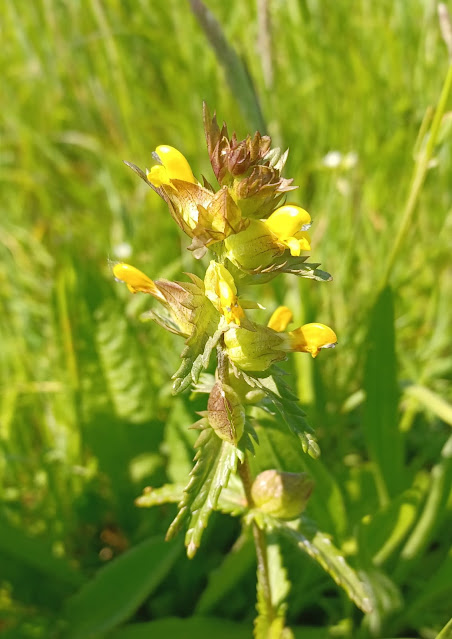Alan Watts drew my attention to an unusual phenomenon.
This Spindle Tree on the railway path had been completely defoliated by caterpillars living in silky webs. Since the leaves are gone so are the caterpillars but I was pretty sure they were the larvae of the Spindle Ermine Moth - after all they were devastating a spindle tree.
Further along the path, opposite the industrial estate, another Spindle had been more recently plundered and the webby nests were still in good condition, with a few culprits inside.
Interestingly several of the nests had a tight silken thread reaching right down to the ground
They're a bit hard to see in the photos but there were a lot and some were over 2 metres high.
I had never seen or heard of this before
and have not found anything explaining these vertical guy ropes.
Then I noticed two spotted caterpillars, clearly ermines, climbing up the thread.
sometimes they seemed to be racing each other
But sometimes the one in front would turn round and seem to urge the other to keep up.
Then occasionally the lower one would attempt to overtake the upper one.
When they got to the leaf at the top they didn't seem to know what to do - just wiggled about apparently aimlessly.
After ten minutes of watching them and looking suspicious to passers-by, I gave up but I've put several pictures up in case anyone has an idea.
There are several ermine moths all looking very similar, and most easily identified by the plant the caterpillars are nesting on: the orchard ermine feeds on blackthorn and hawthorn, the bird cherry ermine on bird cherry and the spindle ermine on spindle. The trees recover quite rapidly.
Photo of moth from Butterfly Conservation
As you can see the moths are white with black spots like the fur of the ermine or stoat in winter, and the caterpillars are not so white but they too are black-spotted.






























































